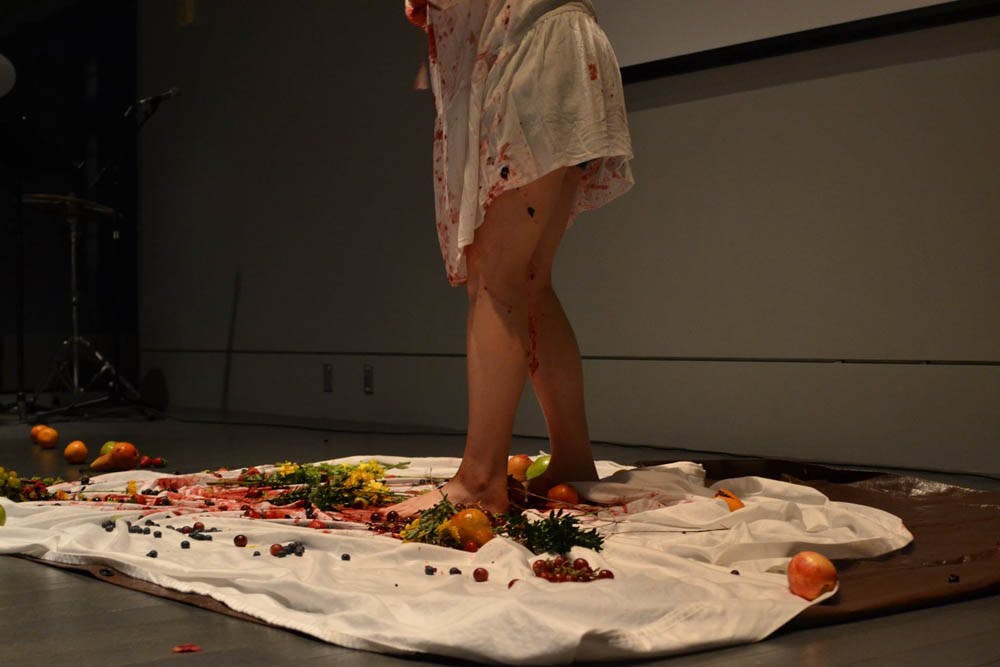“Explosions from the Other Canon” burst onto the scene Friday and Saturday night at the Granoff Center for the Creative Arts. The eclectic collection of shows was curated by Kate Bergstrom GS, a graduate student from the Trinity/Brown program.
The performances were consciously alternative, deliberately daring and invariably powerful. Actors or curators themselves chose pieces that stood for something outside the ordinary. This was a show with a mission: to explode the traditional Western cannon with counter-narratives, Bergstrom said.
“Male writers have dictated the way that we see and perceive our cultural narrative today,” she said. Bergstrom first thought of the idea of creating “Explosions from the Other Canon” when she read an article by Susan Jones in the American Theater Magazine, which listed a compilation of unproduced plays by women dating from 700 A.D. to the 1970s. As Bergstrom perused this list, she realized she had never been taught over 80 percent of the pieces. Instead, traditional education systems emphasized male writers such as William Shakespeare, F. Scott Fitzgerald and Ernest Hemingway.
“There have been silent voices for hundreds of years of women who made stabs at creating counter-narratives,” Bergstrom said. To give these plays the attention she felt they deserved, Bergstrom commissioned artists from multiple disciplines to study these pieces and voice them in their own particular fashion. The performing artists came from a wide range of backgrounds, including multimedia and electronic music experiments, theater and music.
The performances featured a wide range of media, including music, actors, video and spoken word poetry. On stage, fruit was smashed to bits and names of victims of police brutality were solemnly written on a large scroll of paper. A letter by African American playwright Lorraine Hansberry was passionately read aloud. Another piece alluded to cooking shows as a comment on women’s struggle to find their place in the world.
“Feminist pedagogy is about standpoint epistemology, which means coming from all different standpoints and perspectives to take a look at an event or a story,” Bergstrom said.
“Explosions from the Other Canon” not only successfully confronted the viewer with traditionally unheard voices, but also strived to create a new theatrical experience — one that is entirely interdisciplinary and interconnected. Each of the pieces originated from an unproduced play and added to the new canon the show attempted to create.
The performances — while all inspired by historical pieces — were heavily influenced by contemporary concerns and interpretations. The artists seem to have studied and digested the original pieces and performed variations of the works based on their studies. As such, the show paid homage to the written work so long brushed aside by the traditional idea of theater, while still linking the pieces to today’s world such that they remained relevant.
The show strove to embrace the idea of the interdisciplinary. “Explosions from the Other Canon” counters the idea that artists need to restrict themselves to merely being a painter, actor, musician or director. “The eclectic group of artists and audience interacting with one another is in and of itself a counter-narrative to the very rigid forms that we are placed under in an institution,” Bergstrom said.





